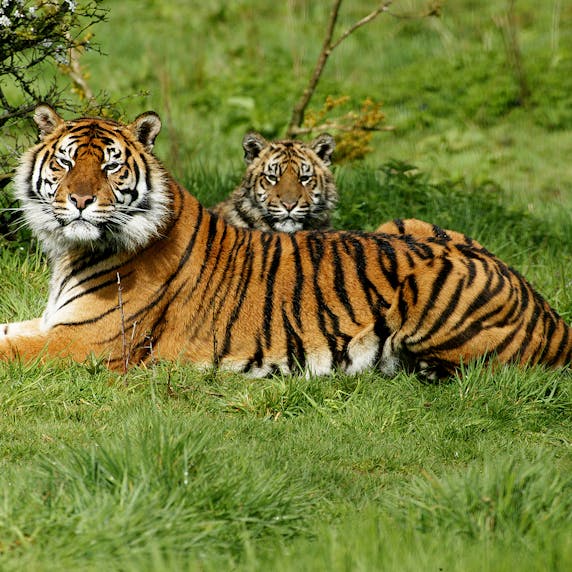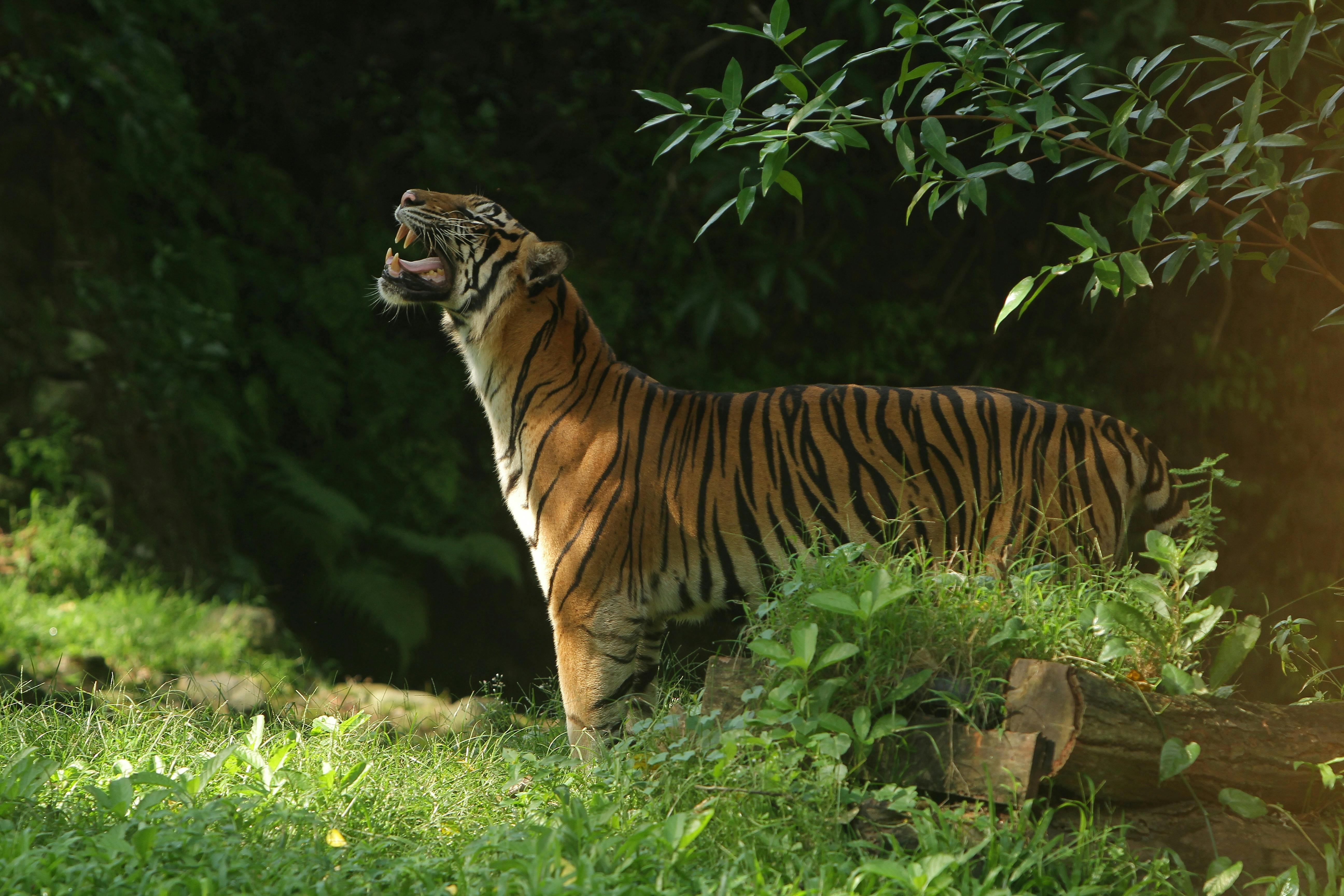
Hiding among tall grasses and shoots of bamboo, the Sumatran tiger is barely visible. Its striped pattern gives it the perfect camouflage to sneak up on large prey such as buffalo, deer and tapirs. But the forests in which the tiger hunts are rapidly disappearing due to the construction of new cities and plantations. That's why Rotterdam Zoo is helping to protect this critically endangered big cat from catastrophe.
Panthera tigris sumatrae
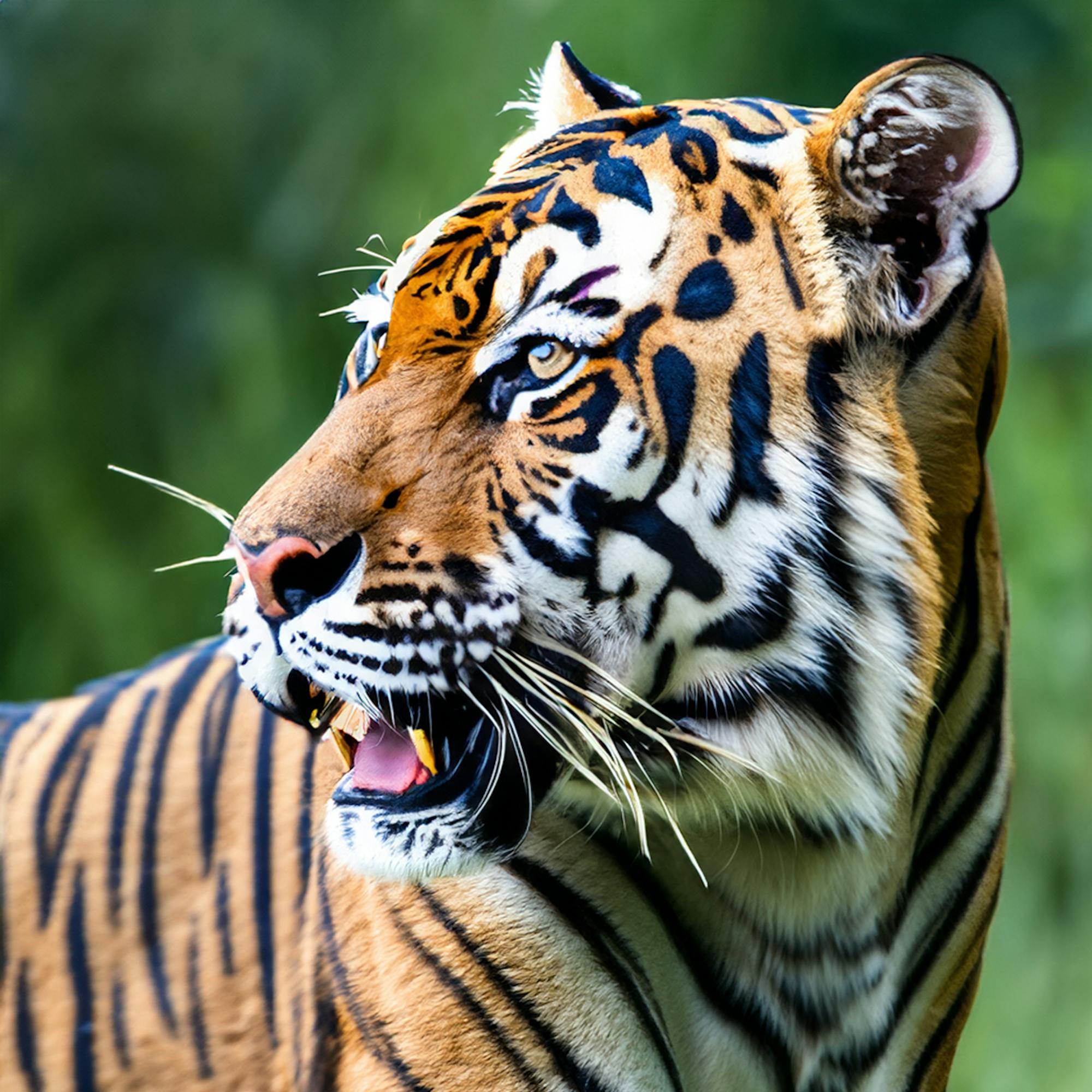
15 years
60 centimetres
2.1 – 2.5 metres
♀ 75 – 110 kilograms
♂ 100 – 140 kilograms
Sumatran tigers are large, sturdy felines. Like all other tigers, they have a characteristic orange coat with black stripes. As far as we know, there are no white Sumatran tigers.
Armed with strong jaws and sharp, retractable claws, they are built like true hunters. They have a kind of “webbing” between their toes, which also makes them agile swimmers. Sumatran tigers are on average smaller than their counterparts on the Asian mainland.
As the name suggests, Sumatran tigers are only found on the Indonesian island of Sumatra. There they live in tropical rainforests and tall grasslands. They are mainly active at dusk and in the dark.
The tigers' habitat is now quite fragmented. This means that they occur in areas that are not connected to each other. As a result, tigers from different areas cannot reach each other.
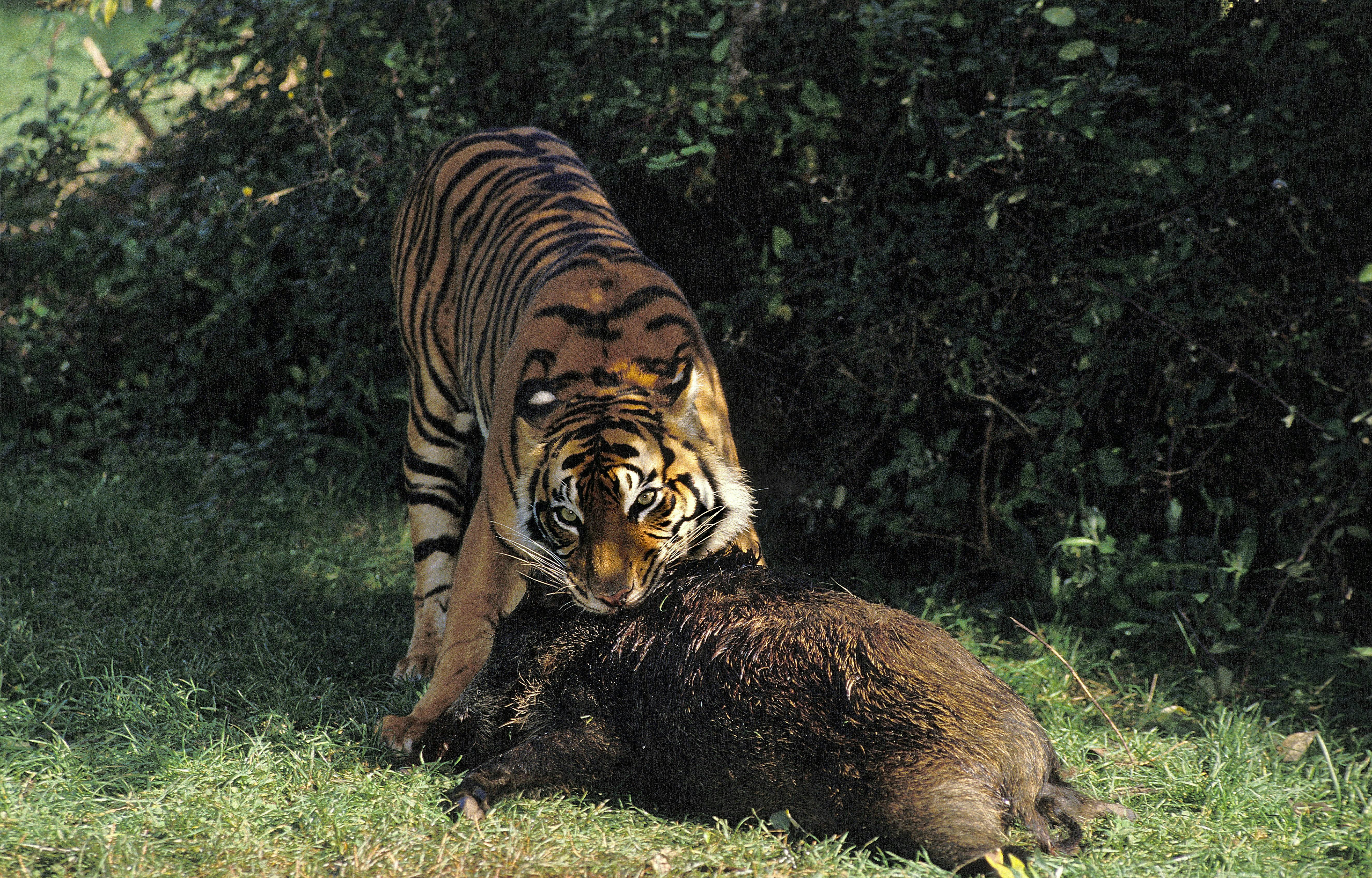
Tigers are agile carnivores. They eat everything from fish to monkeys, but also large prey such as buffalo, deer or tapirs. Once they have spotted their prey, they carefully sneak through the vegetation to get as close as possible. From an ambush, they then sprint towards their prey to overpower it. A targeted bite to the throat quickly kills the prey.
By hunting large herbivores, tigers maintain a healthy balance between animals and plants in their territories. This makes them very important to their environment.

Sumatran tigers are territorial animals. This means that they protect their home range from other tigers. They have enough prey to hunt in this area, so the size of the territory also depends on how many prey animals live there. To mark their territory, tigers urinate on trees and rocks at the border. Other tigers smell this and know that they must stay away.
The territory of males often overlaps with that of a few females, so that they can mate with several females.

Sumatran tigers do not have a predefined mating season. A female can become fertile at any time of the year. In the period before she is ready to mate, she leaves scent marks more often to attract the male. This way, he knows when she will allow him into her territory, or when he should stay away.
The moment two tigers meet is risky for both animals. Sometimes it still ends in a fight, which can be fatal. If the tigers have gained each other's trust, they stay together for about two days to mate. After that, they leave each other again.
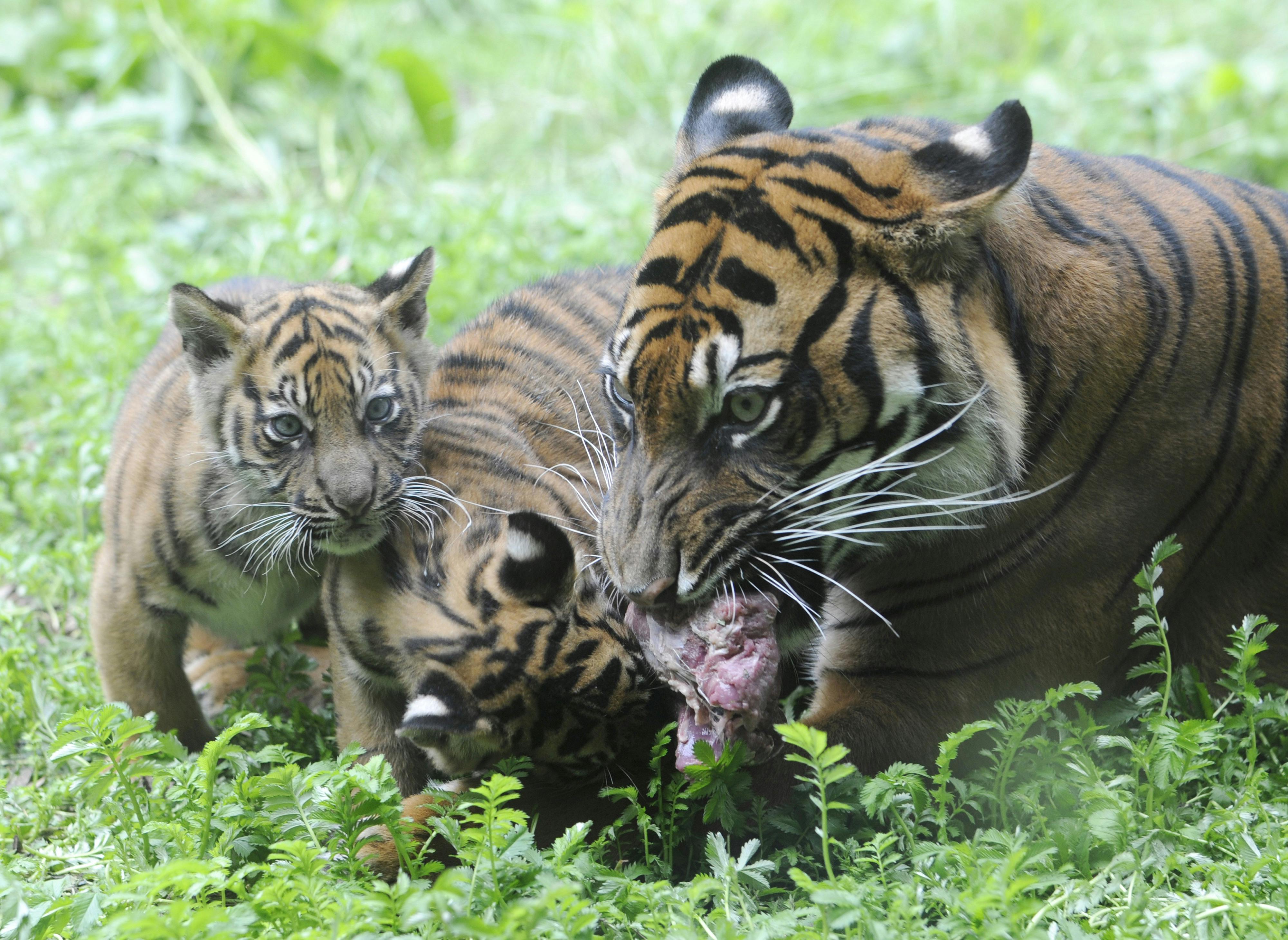
A tiger mother usually seeks out a sheltered place to give birth to her cubs, such as a cave or a dense forest. Here she hides her cubs from other predators. The two to five cubs are born blind and weigh no more than 1600 grams. But in their first month they quadruple in weight and continue to grow rapidly thereafter.
Young tigers learn to hunt when they are at least one year old and their large canines come through. When they are one and a half years old, they hunt independently in their mother's territory. After more than two years, they leave the area to establish their own territory.
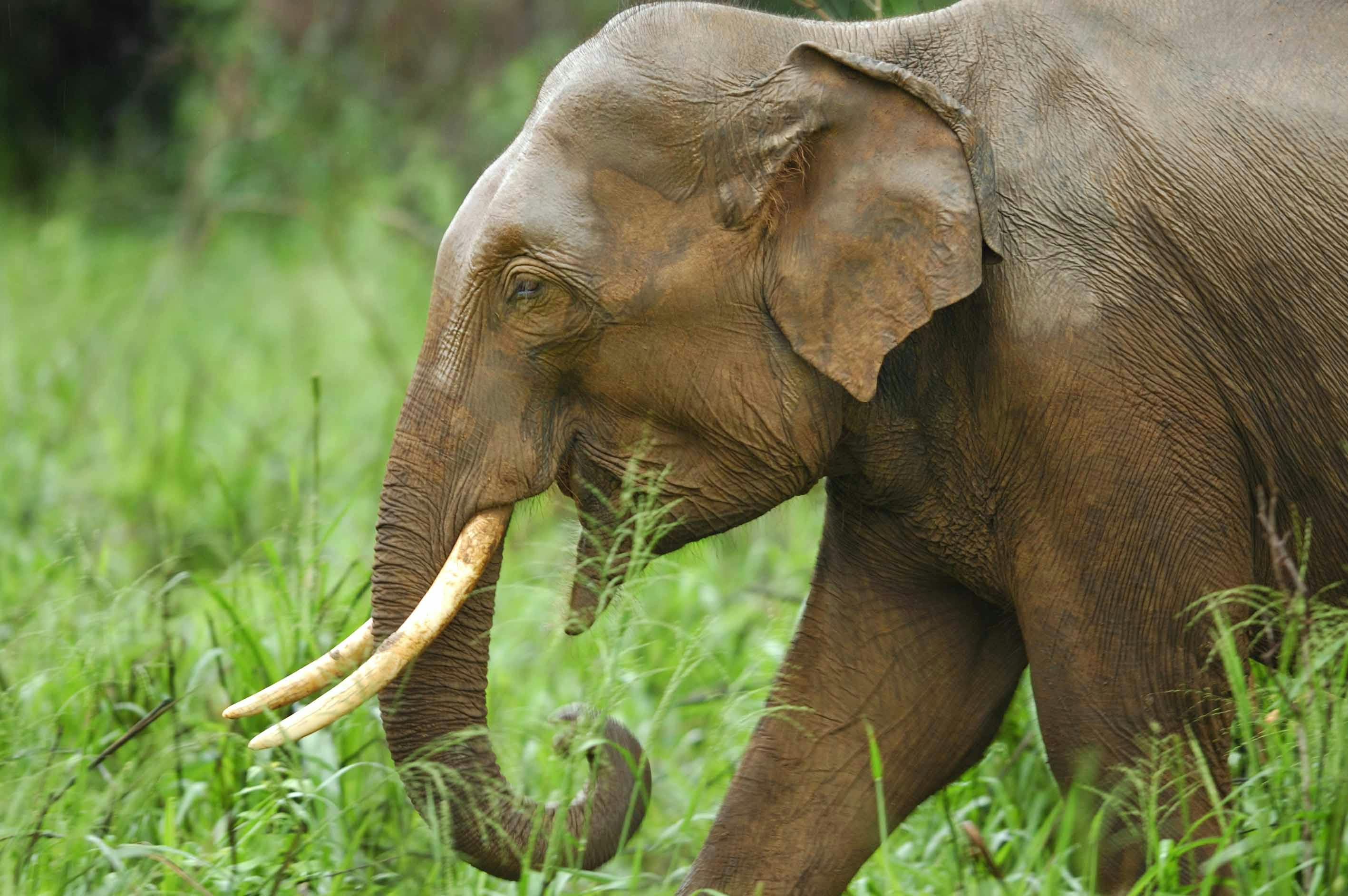
Sumatran tigers are at the top of the food chain. This means that few animals hunt tigers. However, they do share their habitat with Asian elephants. These herbivores are so large and dangerous that tigers prefer to stay away from them. Saltwater crocodiles also live in their habitat and sometimes attack tigers if they come too close. But the most dangerous animal for a tiger is the human.

Fewer than 400 Sumatran tigers currently remain in the wild. These live in areas that are becoming smaller and smaller due to the expansion of cities and agriculture. This also causes the tigers to come into contact with humans more often. For example, in the absence of prey animals, tigers attack livestock. To protect themselves and their livestock, Sumatran people often shoot tigers. In addition, tigers are hunted for their claws, skins and bones, which some people, wrongly, believe have medicinal powers. All of these dangers have meant that this large feline is now critically endangered.
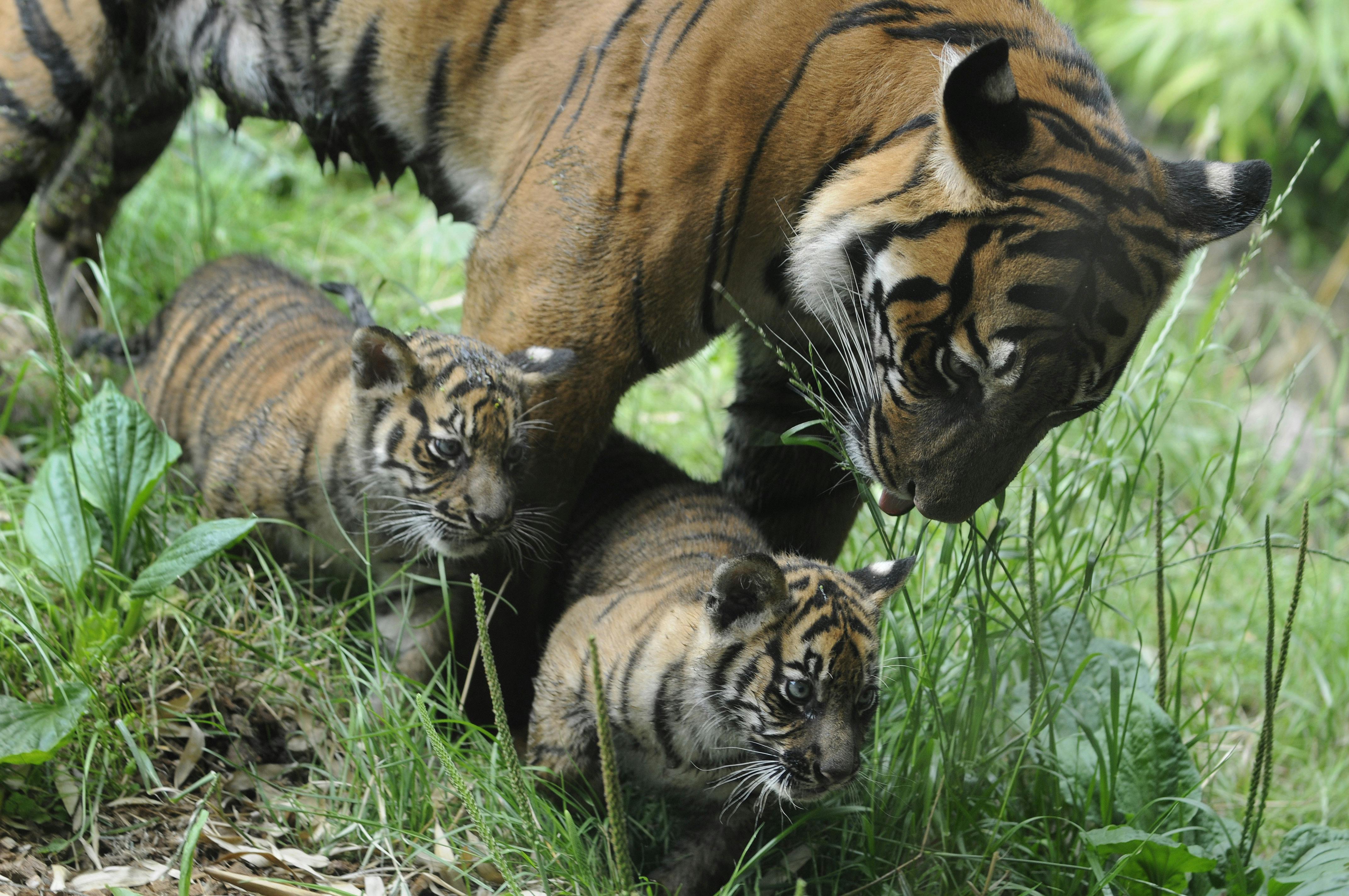
Rotterdam Zoo participates in the European population management programme for Sumatran tigers. Based on the pedigree of tigers in zoos, the coordinator determines which animals are best paired with each other to produce healthy offspring. These cubs are then moved to other zoos to form the next generation. In this way, we are building up a healthy population as a reserve for wild animals, with the ultimate goal of returning tigers to their natural habitat when conditions are favourable.

